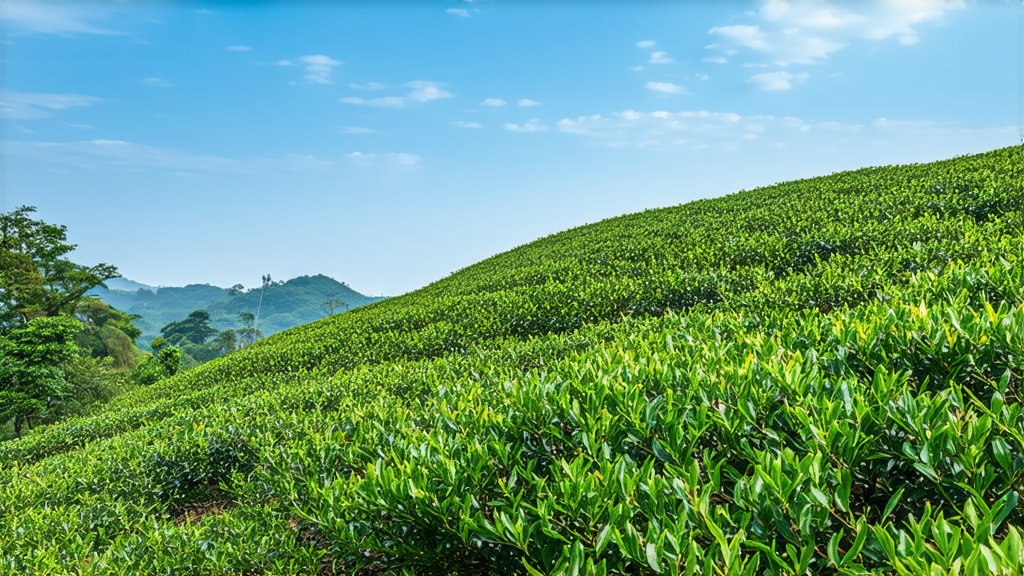
In the vast and diverse landscape of Chinese tea culture, one variety stands out for its unique flavor profile, intricate production process, and rich history – Tieguanyin, a premium oolong tea hailing from the picturesque mountains of Anxi in Fujian Province, China. This exquisite tea has captivated the hearts and palates of tea enthusiasts worldwide, earning its place as one of the most revered and sought-after teas in the world. Join us on a journey to explore the enchanting world of Tieguanyin, delving into its historical roots, varieties, meticulous craftsmanship, and the art of its appreciation.
Historical Roots: A Legacy Carved in Time
Tieguanyin's story begins in the early 18th century during the Qing Dynasty. Legend has it that the tea was discovered by a poor scholar named Wei Yin, who found refuge in a temple nestled amidst the verdant hills of Anxi. It is said that he stumbled upon a wild tea tree whose leaves, when brewed, produced an extraordinary aroma reminiscent of orchids. He named this miraculous find "Iron Buddha," reflecting both the strength and delicacy of the tea. Over time, the name evolved into Tieguanyin, translating to "Iron Goddess of Mercy," symbolizing the balance between power and grace embodied in this exceptional tea.
Varieties: A Symphony of Flavors
Tieguanyin comes in several distinct varieties, each with its own nuanced flavor profile and aromatic characteristics. The two primary types are Anxi Tieguanyin and Singapore Tieguanyin. Anxi Tieguanyin, the original and most renowned, is grown in the Wuyi Mountains of Anxi County and is known for its floral fragrance, creamy texture, and sweet aftertaste. On the other hand, Singapore Tieguanyin, though less common, offers a different experience with its roasted notes, earthy undertones, and a more robust body. These variations cater to diverse preferences among tea connoisseurs, showcasing the versatility and depth of Tieguanyin as a tea.
The Art of Craftsmanship: From Leaf to Cup
The magic of Tieguanyin lies not only in its genetic makeup but also in the meticulous traditional methods employed in its production. The journey from leaf to cup involves several stages: plucking, withering, tossing (or shaking), fixation, rolling, oxidation, drying, and roasting. Each step plays a crucial role in shaping the tea's distinctive qualities.
- Plucking: Only the tender buds and top leaves are handpicked, ensuring the highest quality raw material.
- Withering: Leaves are spread out to wilt, reducing moisture content and preparing them for further processing.
- Tossing/Shaking: This unique process involves repeatedly tossing the leaves in bamboo baskets or shakers to bruise the edges slightly, promoting partial oxidation and releasing the tea's natural fragrance.
- Fixation: Heat is applied to halt oxidation and set the tea's characteristic green color.
- Rolling: Leaves are rolled to form tight pellets, which helps in the extraction of flavors during brewing.
- Oxidation: Controlled exposure to air allows for the development of complex flavors and aromas.
- Drying & Roasting: Final drying removes any remaining moisture, while roasting can add depth and warmth to the tea's profile.
The artisanal nature of this process ensures that every batch of Tieguanyin is a testament to human skill and dedication, preserving centuries-old traditions.
The Ritual of Appreciation: Savoring Tieguanyin
Tasting Tieguanyin is not merely about consuming a beverage; it is an immersive experience that engages all senses. The traditional Chinese tea ceremony provides a framework for this sensory journey, emphasizing mindfulness and respect for the tea. Here’s how to appreciate Tieguanyin like a true connoisseur:
-
Preparation: Choose a Yixing clay teapot or a Gaiwan (a lidded bowl) for brewing, as they enhance the tea's aroma and flavor. Use water heated to around 90-95°C (194-203°F). Rinse the tea leaves briefly to awaken their flavors.
-
Brewing: Steep the leaves for approximately 30 seconds for the first infusion, then gradually increase the steeping time for subsequent brews. Tieguanyin can be brewed multiple times, each revealing new layers of complexity.
-
Aroma: Before taking a sip, inhale deeply to capture the tea's fragrant bouquet. Notes of orchid, jasmine, and cream are often detected, along with subtle hints of fruits and nuts.
-
Tasting: Take small sips, allowing the tea to coat your palate fully. Pay attention to its smoothness, sweetness, and the lingering finish. Tieguanyin is celebrated for its ability to combine strength with elegance, offering a balanced yet profoundly satisfying taste experience.
-
Observation: Admire the tea's appearance – the tightly rolled pellets unfurling gracefully in hot water, revealing vibrant green hues. The liquor should be a clear, golden-yellow color.
-
Reflection: Take moments between sips to reflect on the tea's journey from ancient forests to your cup, appreciating the cultural heritage and craftsmanship embedded within each brew.
Conclusion: A Timeless Treasure
Tieguanyin represents more than just a type of tea; it embodies a philosophy of harmony between man and nature, tradition and innovation. Its enduring popularity across continents speaks volumes about its universal appeal and the timeless allure of Chinese tea culture. As you embark on your exploration of this remarkable beverage, remember that every cup of Tieguanyin is an invitation to slow down, savor life's simple pleasures, much like the wise Iron Goddess herself imparts through her delicate yet powerful presence in each sip.